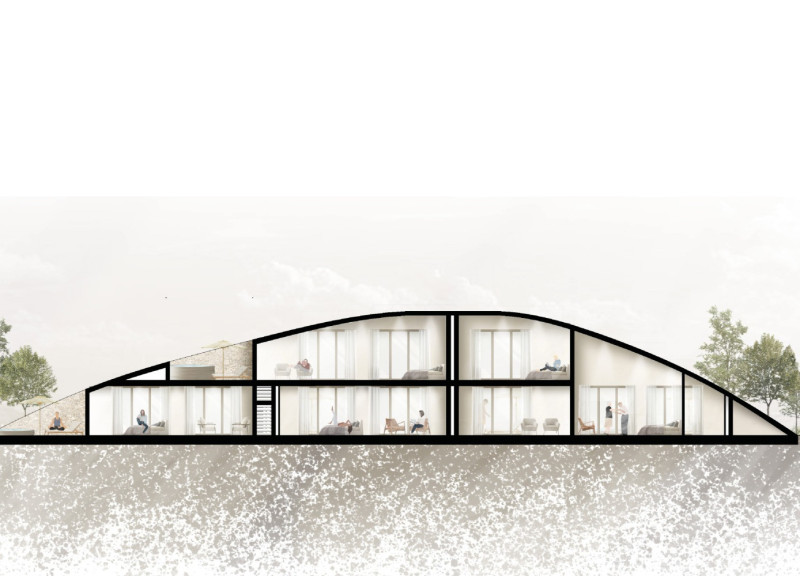5 key facts about this project
The design "Shades of Wine" presents an engaging response to the landscape of winemaking culture. Set in a vibrant environment, it combines sustainability and community in a way that promotes interaction and learning. The architecture features flowing forms that reflect the natural terrain, creating a modern take on the traditions of winemaking.
Public Building Functionality
The public building plays a key role in the design, featuring a circular architecture that fosters social connections among visitors. This structure rises from the ground and transforms into a green roof that is accessible to all. The roof serves as a gathering space, promoting the principles of sustainable design and contributing to local biodiversity by allowing native plants to thrive.
Artistic Integration
A prominent aspect of the public space is the large window that displays the artwork "Shades of Wine." Made from colored and individually cast glass pieces, this installation creates a dynamic, semi-transparent wall. As sunlight enters, the interplay of color changes throughout the day, enhancing the interior while establishing a connection with the landscape outside.
Interior Spatial Dynamics
The design emphasizes open and connected spaces that encourage movement. Visitors enter through a courtyard and are greeted by a lounge and bar area that leads to an elevated dining space. The presence of large communal tables supports collective experiences, while the displayed artwork adds to the overall ambiance.
Guesthouse Design Approach
The guesthouse offers a contrasting design focused on privacy for those seeking an escape in the vineyard setting. It connects indoor and outdoor environments through large windows and private decks. Careful positioning of spaces allows for peaceful views, inviting guests to enjoy the natural surroundings.
Local sandstone and clay plaster are used to highlight the project’s commitment to regional authenticity. Recycled concrete and wood reinforce sustainable practices throughout. An important detail can be found in how the architecture allows for smooth transitions between inside and outside, creating spaces that resonate with nature.






















































